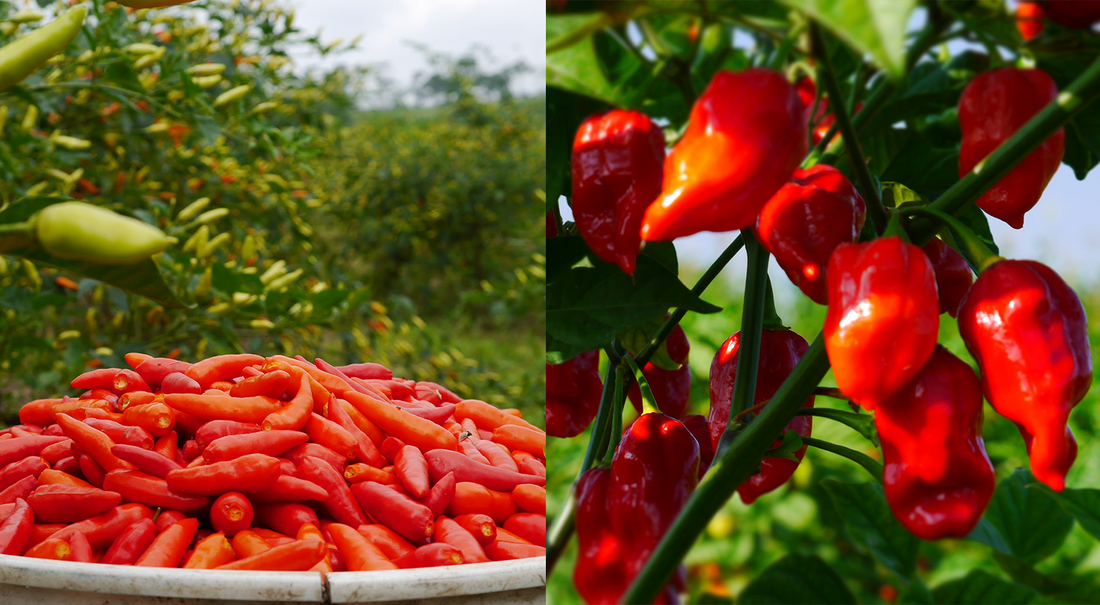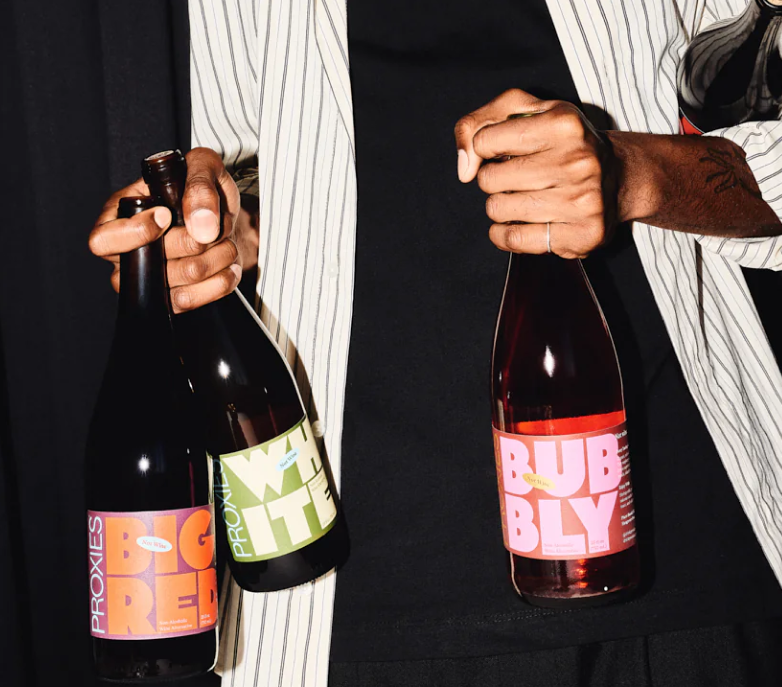
Trial By Fire: How UCHU Is Saving Rare Heritage Hot Peppers
Share
What does it take to get a rare, heritage-breed hot pepper to market?
For UCHU—the South American company whose peppers give our Hot Sauce Kit depth, dimension, and that all-important Scoville factor—it’s a rigorous experimental process that takes no less than 29 months.
“We've had some peppers that have started from, literally, a pepper, that (co-founders) Imelda or Phillip bring back from a trip,” says Pablo Beron, UCHU’s R&D coordinator.
“One pepper—and that's what we have to take care of and get our crops in two years from.”
Based in Ecuador and Peru, UCHU is dedicated to heritage pepper preservation and small-scale, sustainable farming.
Naturally, that’s not the case for every pepper grower. Hot peppers are a highly industrialized crop, with massive producers in China and India owning much of the market. Large machines harvest peppers in huge numbers—mainly mass-appeal peppers like cayennes and jalapeños, all stemming from an unruly, random mix of intermingled strains.
Contrast that with UCHU’s approach: The company works with a network of 300 smallholder farmers who grow a dozen or so different pepper varieties in small batches.
On top of feeding resources into local economies and encouraging more sustainable practices like crop rotation, it also makes for a better product: “Peppers are really good as a small scale on plots,” explains Imelda Echavarria, who co-founded the business with her husband, Philip Baker; his family has been growing peppers since the ‘60s.
“All these types of peppers, you either harvest them when they’re green, orange or red, and it's pretty much done by hand. It's not so viable to grow many, many hectares of them.” (This way, they can pick the peppers at their peak.)
A few years ago, however, they grew concerned about a steady decline in crop quality. Blame open pollination: Peppers are fertilized by everything from birds and bees to weather conditions, which means a lot of natural interbreeding between strains.
“A lot of these varieties that have been common in different parts of South America started getting mixed together or disappearing,” says Echavarria.
That’s where UCHU’s R&D program—and that one lonely pepper in a suitcase—comes into play.
Launched in 2018, the department rigorously tests and selects new pepper strains for commercial viability—a process that takes as long as 29 months from start to finish—and preserves them for posterity in their seed bank.
First, the UCHU team attempt to sprout the seeds—a tough task, since wild species are less likely to germinate at all. Successful sprouts go through multiple cycles of growing, testing and harvesting, as well as careful matching with individual farmers to make sure the seedlings’ new homes will have the proper conditions.
After two and a half years—assuming that Mother Nature cooperates—UCHU’s staff will finally have a heritage-breed pepper that’s road-tested for hardiness and ready to be farmed.
But after that, they’re faced with an entirely new challenge: Teaching the world how to use a pepper they may never heard of before.

WHAT’S NEW AND HOT
UCHU’s product roster is filled with names familiar to any self-respecting spice addict: Habanero, scotch bonnet, serrano. But ticking down the list further takes you into slightly more unusual territory: Teardrop-shaped lagrimas, meaty rocotos, kumquat-like charapitas.
“You're keeping heritage varieties of peppers alive, and you get to know a lot of stuff that nobody else does. That's what we want to try to get to the world,” Beron explains.
But that’s sometimes a tough sell, especially when folks come in the door just looking to add a level of generic heat to whatever they’re making.
”Peppers have become basically a heat source and that's it, right? But what they don't see is that there's so much behind it,” Beron says. “Even if (peppers are from) the same species, they may have different flavors, or the pungency is different.”
To help get that point across—particularly with lesser-known peppers—they’ve created a “flavor catalog” to distribute among buyers.
“You have each pepper variety, the aroma notes, the flavor notes, the pungency map where it shows how slow the heat hits, where it hits in the mouth—everything. Basically, something could go very wrong when you’re doing a sauce, or very right, and that can come back to the pepper itself.”
To encourage people to think outside the box, Beron—who has a background as a chef—brainstorms new flavor combos that he can suggest to buyers as a potential fit for their products. (By total coincidence, he says, he recently dreamed up an idea for a saffron-forward hot sauce—not realizing we’d already beaten him to the punch with Saffron Gold.)
Echevarria says she recently even went so far as to suggest improved sauce recipes for a company whose prototype samples wound up being decidedly less-than-delicious.
“I mean, we know the peppers,” she says. “So we can be a real partner in this—and that's what we want to be.”

VINEGAR + PEPPERS = <3
When our product development team came knocking on UCHU’s door, Echevarria says, she knew their peppers would be a perfect fit.
“When it's a company that just wants to copycat a cheap Tabasco sauce—then that's not gonna be for us,” she says.
“When the company is like you, that is thinking about flavors, that's looking for new niches—that's a perfect combination.”
She was also intrigued by Acid League’s focus on vinegar: “We use a lot of vinegar and it goes perfect with peppers. It’s the perfect combination.”
Echavarria even came to visit our facility in Guelph—and brought along some of her own plantain vinegar to inspire future flavor experiments.
“So the match is like a glove, like they say.”
You can taste that chemistry in our Living Pantry hot sauces, plus an extra little bit of flavor science: Each sauce features a different UCHU pepper—all of them fermented for a minimum of two months to bring out new flavors.
To create fermented mash, UCHU grinds fresh peppers with salt and preserves them in a controlled environment “where lactic acid bacteria and yeasts can really work together to get a pepper to a really special place,” Beron says.
“It really brings out certain characteristics, umami flavors in some of them, because some peppers are really naturally smoky, and it's really special [...] And it’s all just pure peppers and salt.”

THE FINAL PRODUCT
Our hot sauces are tied together with the common funk and flavor of fermentation—but show off four very different peppers hailing from four different regions:
Saffron Gold: Peruvian escabeche peppers—also known as “amarillo” peppers for their bright yellow color—bring their characteristic sweetness and heat to the Meyer lemon, turmeric and saffron notes in this sunny hot sauce.
Liquid Kimchi: Tiny-but-mighty wiri wiri peppers—beloved in their native Guyana for their smoky and pungent qualities—add the necessary fermented funk to this kimchi-inspired sauce. Tamari and shiro miso paste add necessary umami to sweet Korean pear, savory shallot and bold gochugaru.
Baton Rouge: Serrano peppers (originally hailing from Mexico) are aged once during the fermentation process, mixed with roasted garlic, tangerine and ACV, and aged again in medium-toasted oak barrels, lending this bright, citrusy sauce its unique smoke and toffee flavors.
Sichuan Málà: Featuring fermented Caribbean Scotch bonnets, this sweet-savory-spiced creation features the hottest peppers of the bunch—but numbing Sichuan pepper, warming cinnamon, savory garlic and amber honey hold everything in perfect balance.
Ready to taste for yourself? Order your Hot Sauce Kit now.








